In the azure depths of the Fourni Archipelago, a small complex of islands between Ikaria, Samos and Patmos, a team of underwater archaeologists from Greece’s Ephorate of Underwater Antiquities and the University of Thessaly has unveiled a treasure trove of ancient artifacts, shedding light on the rich maritime heritage of the region.
At the heart of these discoveries lies the remarkable shipwreck off the coast of Fourni island, a time capsule from the early Byzantine period (5th-6th centuries AD). Nestled on a steeply sloping, sandy seabed, at a depth of 43-49m, this underwater marvel is generating a great deal of excitement within the archaeological community.
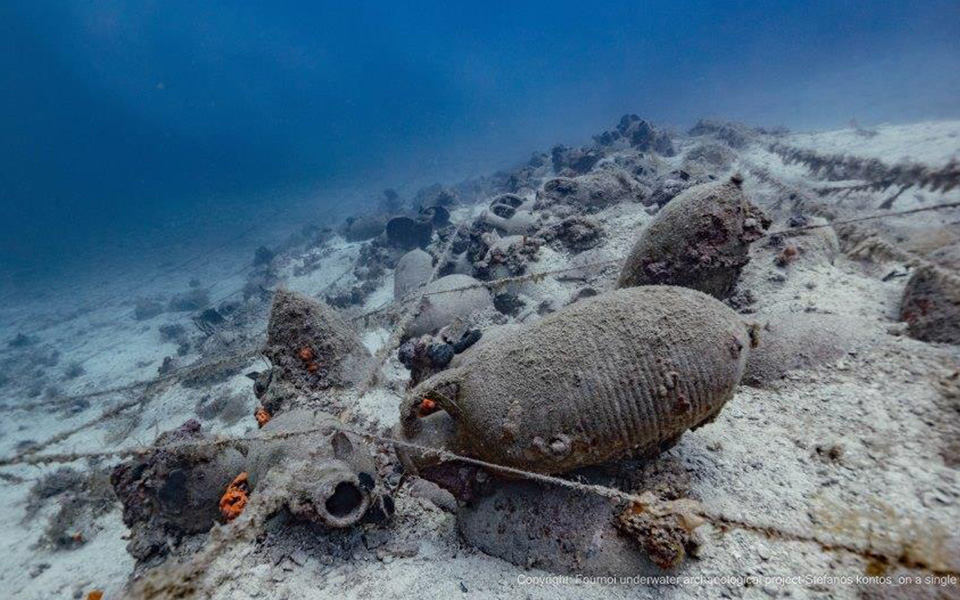
© Ministry of Culture / Ephorate of Underwater Antiquities
Systematic excavations, initiated in 2021, have revealed a diverse cargo, offering tantalizing insights into ancient trade routes. Among the treasures recovered are eight distinct types of amphorae, originating from distant lands such as Crimea, Sinope, and Heraclea Pontica, an ancient Greek city on the southern shores of the Black Sea, as well as other locations across the Aegean. Additionally, a cargo of ceramic tableware from the region of Phocaea in Asia Minor has provided invaluable clues about the ship’s origins and its final voyage.
In 2023, the expedition shifted its focus to the meticulous cleaning of the shipwreck’s shallower side, addressing the challenges posed by sand deposits and the steep slope of the seabed. Despite adverse weather conditions, the team persevered, conducting 170 group dives and removing approximately 15 cubic meters of sediment. Their efforts revealed a scattered array of cargo, hinting at a partial loss before the ship’s final descent to its resting place in the depths, between 40 and 50 meters below the surface.
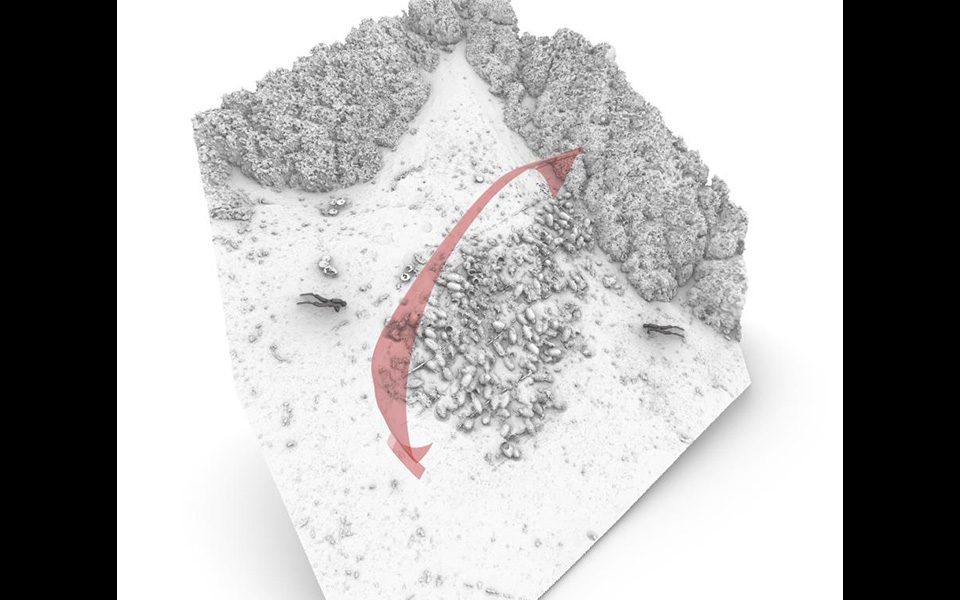
© Ministry of Culture / Ephorate of Underwater Antiquities
One of the most significant discoveries from the wreckage was the presence of tableware, providing vital clues for dating the shipwreck to the years 480 to 520 AD, likely during the reign of emperor Anastasius I (491-518 AD), who was known for his highly effective tax and monetary reforms.
According to the ancient sources, Anastasius’ reforms dramatically increased the state coffers and strengthened the empire’s economy, enabling more expansionist policies in the later 6th century under the emperor Justinian, who ruled from 527 to 565 AD.
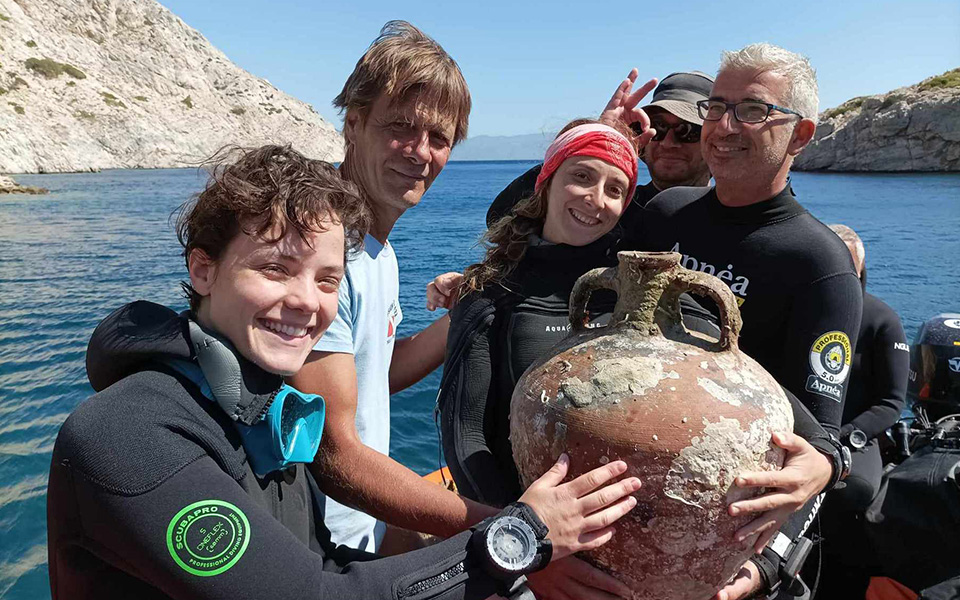
© Ministry of Culture / Ephorate of Underwater Antiquities
The Archaeologists of Tomorrow
But the expedition’s impact extends beyond the realm of archaeology. Alongside the excavation of the main shipwreck, artifacts were recovered from three additional wrecks in the Fourni Archipelago, slated for exhibition at the proposed Archaeological Museum of Fourni.
These discoveries, including a giant anchor stock from the Archaic period (c. 800-480 BC) and amphorae dating back to the 6th century BC and the 7th and 8th centuries AD, offer a comprehensive glimpse into the region’s maritime past.
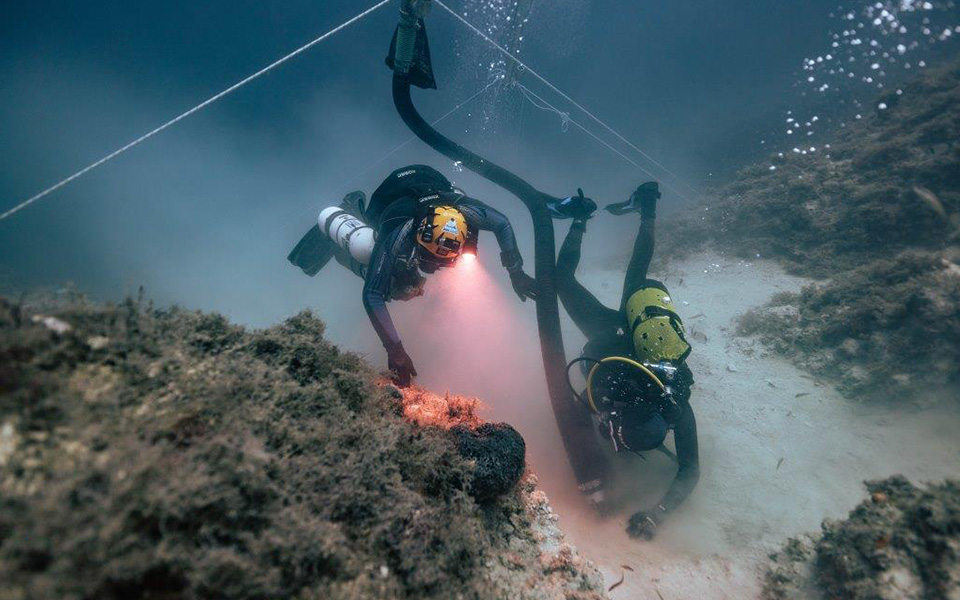
© Ministry of Culture / Ephorate of Underwater Antiquities
Equally important is the expedition’s commitment to training the next generation of underwater archaeologists. Nine undergraduate and postgraduate students from the University of Thessaly participated in the research, gaining hands-on experience under the guidance of Giorgos Koutsouflakis, assistant professor of maritime archaeology, and Dionysios Evangelistis, archaeologist of the Ephorate of Underwater Antiquities.
This invaluable opportunity not only enriches their academic studies but also ensures the continued exploration and preservation of Greece’s underwater heritage, as young, newly-trained archaeologists join the field.
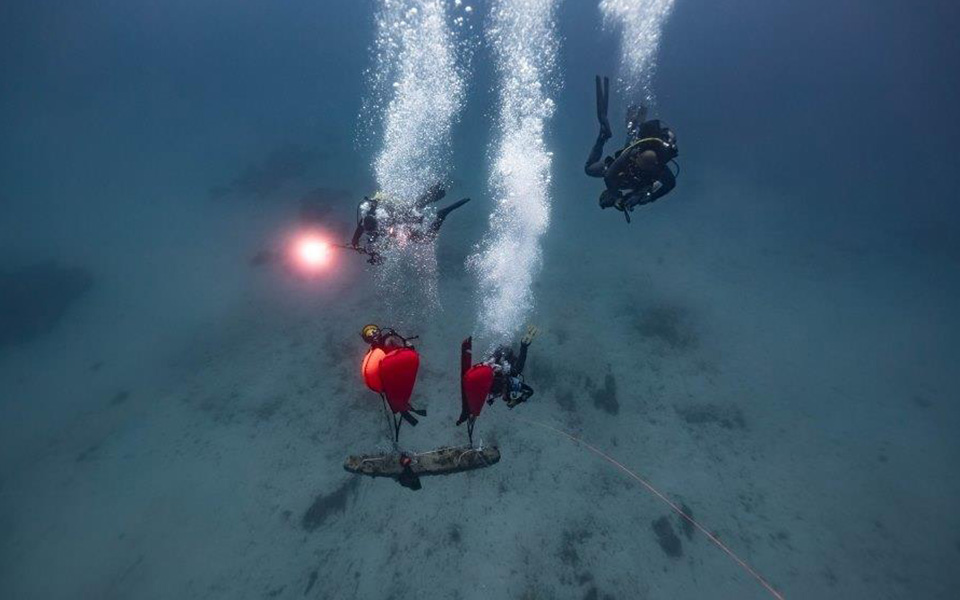
© Ministry of Culture / Ephorate of Underwater Antiquities
Supported by various organizations and companies, including the Municipality of Fourni/Korseon and the General Secretariat of the Aegean and Island Policy, the research was accompanied by a staff of 30 divers from different specialties, including archaeologists, architects, conservators of antiquities, professional divers, and photographers.
The journey into Fourni’s underwater world continues, promising new revelations and adventures yet to come.
With information in Greek from kathimerini.gr.












